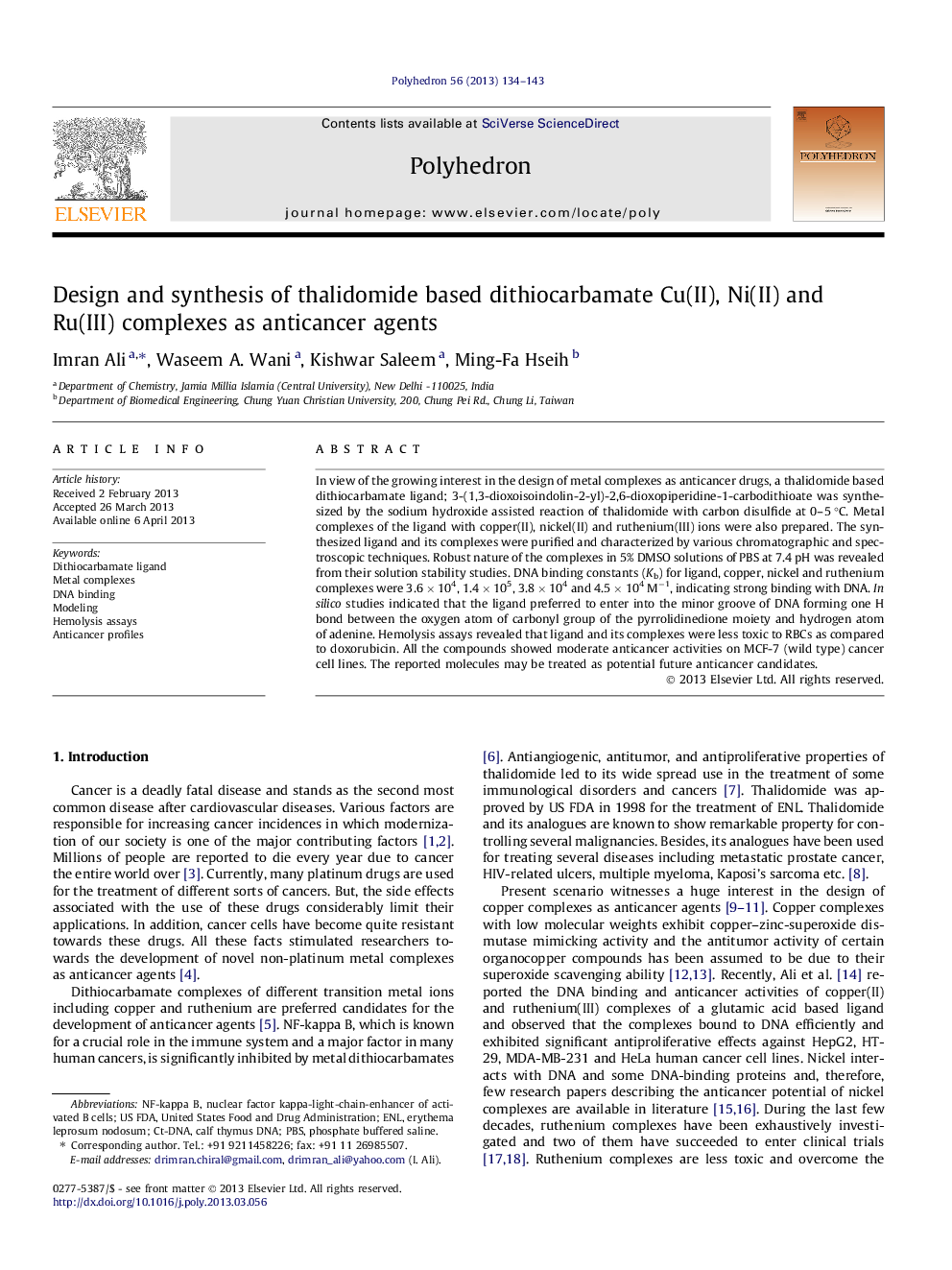| کد مقاله | کد نشریه | سال انتشار | مقاله انگلیسی | نسخه تمام متن |
|---|---|---|---|---|
| 1336871 | 1500283 | 2013 | 10 صفحه PDF | دانلود رایگان |

In view of the growing interest in the design of metal complexes as anticancer drugs, a thalidomide based dithiocarbamate ligand; 3-(1,3-dioxoisoindolin-2-yl)-2,6-dioxopiperidine-1-carbodithioate was synthesized by the sodium hydroxide assisted reaction of thalidomide with carbon disulfide at 0–5 °C. Metal complexes of the ligand with copper(II), nickel(II) and ruthenium(III) ions were also prepared. The synthesized ligand and its complexes were purified and characterized by various chromatographic and spectroscopic techniques. Robust nature of the complexes in 5% DMSO solutions of PBS at 7.4 pH was revealed from their solution stability studies. DNA binding constants (Kb) for ligand, copper, nickel and ruthenium complexes were 3.6 × 104, 1.4 × 105, 3.8 × 104 and 4.5 × 104 M−1, indicating strong binding with DNA. In silico studies indicated that the ligand preferred to enter into the minor groove of DNA forming one H bond between the oxygen atom of carbonyl group of the pyrrolidinedione moiety and hydrogen atom of adenine. Hemolysis assays revealed that ligand and its complexes were less toxic to RBCs as compared to doxorubicin. All the compounds showed moderate anticancer activities on MCF-7 (wild type) cancer cell lines. The reported molecules may be treated as potential future anticancer candidates.
Thalidomide was extracted from thalix capsules. Ligand was synthesized by reacting thalidomide with carbon disulfide. Ligand was complexed with Cu(II), Ni(II) and Ru(III) ions, separately. In silico studies of the ligand were carried out. Molecular modeling of the complexes was carried out. DNA binding studies of both ligand and its complexes were carried out by UV–Vis spectrophotometry. Hemolysis assays and anticancer profiles of the reported compounds were carried out by standard protocols.Figure optionsDownload as PowerPoint slide
Journal: Polyhedron - Volume 56, 12 June 2013, Pages 134–143